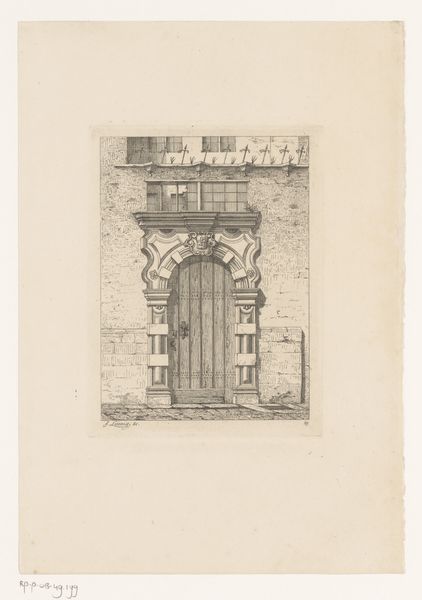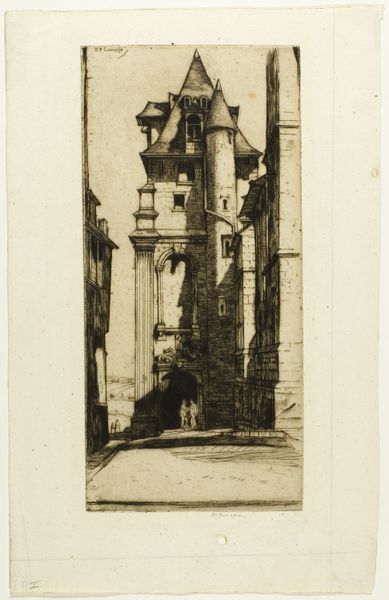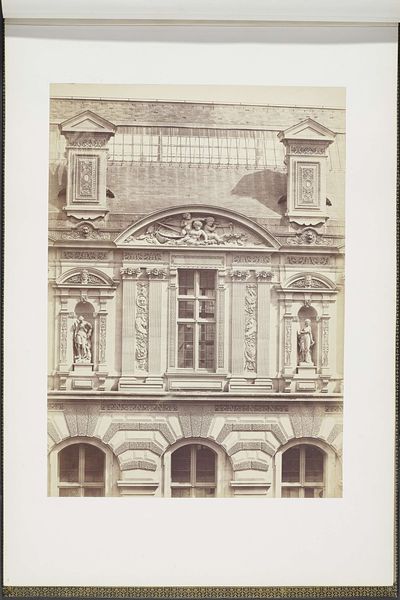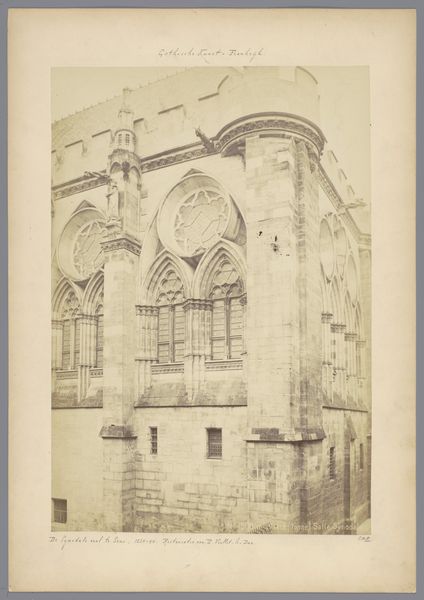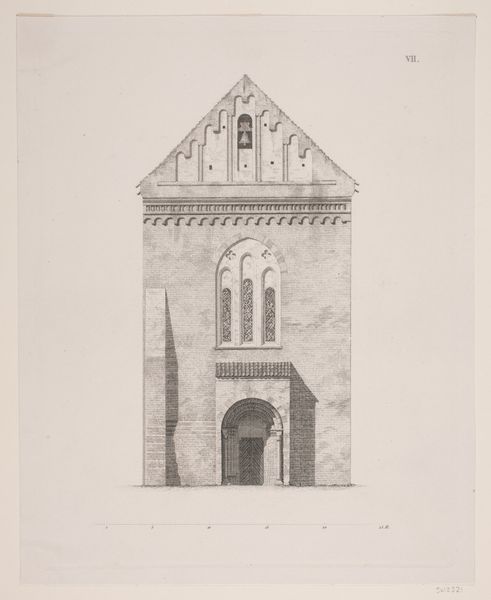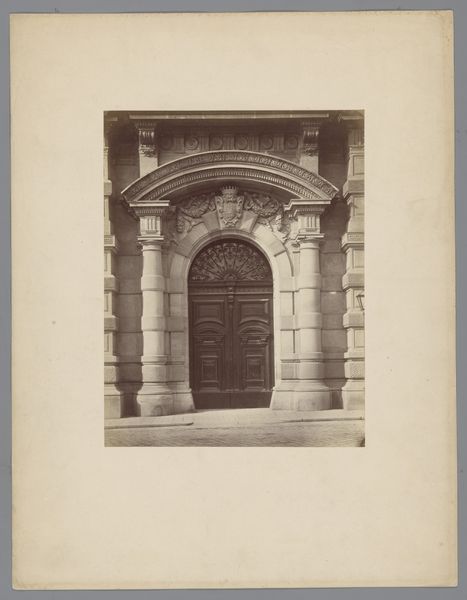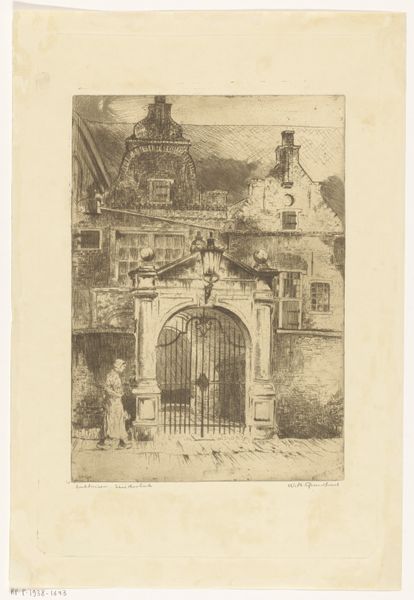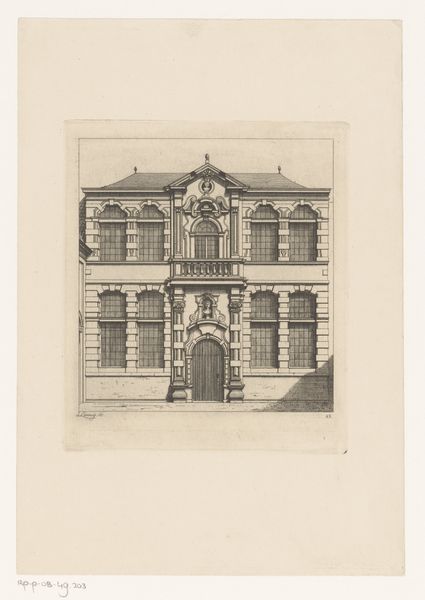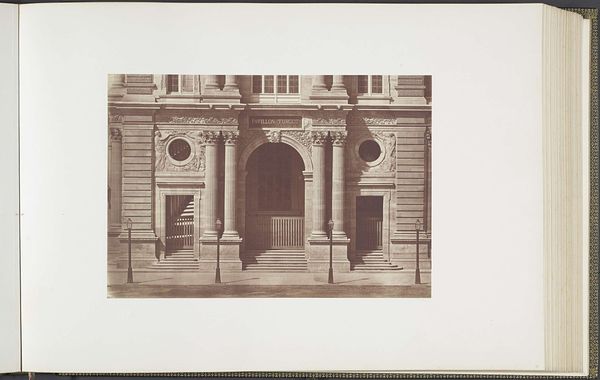
print, photography, gelatin-silver-print, architecture
#
medieval
# print
#
photography
#
gelatin-silver-print
#
cityscape
#
architecture
Dimensions: height 157 mm, width 104 mm, height 249 mm, width 203 mm
Copyright: Rijks Museum: Open Domain
Curator: Here we have a gelatin silver print from between 1860 and 1884, taken by Ferdinand Schmidt. The piece is titled "Erker met een Bijbelse voorstelling, Neurenberg"—or "Bay Window with a Biblical Scene, Nuremberg." It is a fascinating architectural cityscape currently held in the collection of the Rijksmuseum. Editor: It feels heavy, doesn't it? Not just physically in the image, but there's a weight to the ornamentation and the stark lighting. Almost oppressive. Curator: Absolutely. This was taken during a period of intense social change and, particularly in Germany, a burgeoning interest in architectural preservation and documenting pre-industrial cityscapes. Photography became a crucial tool in understanding that social shift. Editor: How do the art and architecture link to the concept of social documentation? Curator: Well, think about Nuremberg. It was a powerful, free imperial city during the medieval period and a centre for Renaissance humanism, and as the social system shifted during the 19th century, this photography aimed to grasp what was at stake as the society changed from pre-industrial times. There is so much wrapped up in these cityscapes. They visually reinforced local narratives, particularly around heritage. Editor: I see how a lens toward historical preservation informs the very act of photographing these cityscapes. Knowing this brings into sharper focus not only its formal beauty, but also its status as a historical marker—even a political one. I am keen to research more of Schmidt's gelatin silver prints and really think about the intention behind this image making. Curator: A perfect synthesis of intention and preservation.
Comments
No comments
Be the first to comment and join the conversation on the ultimate creative platform.
